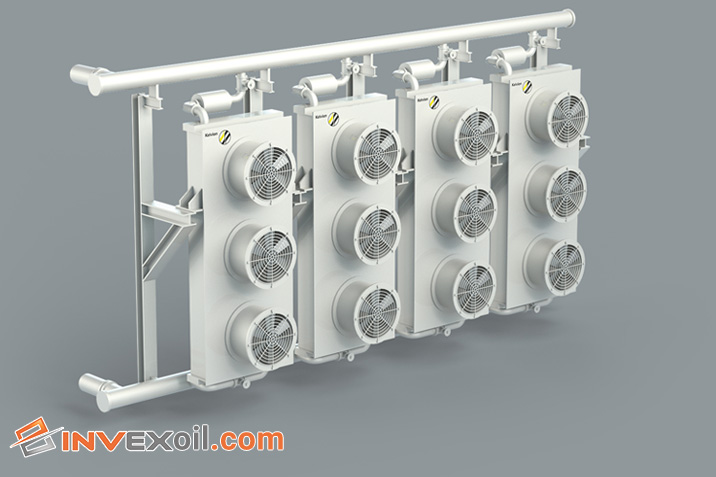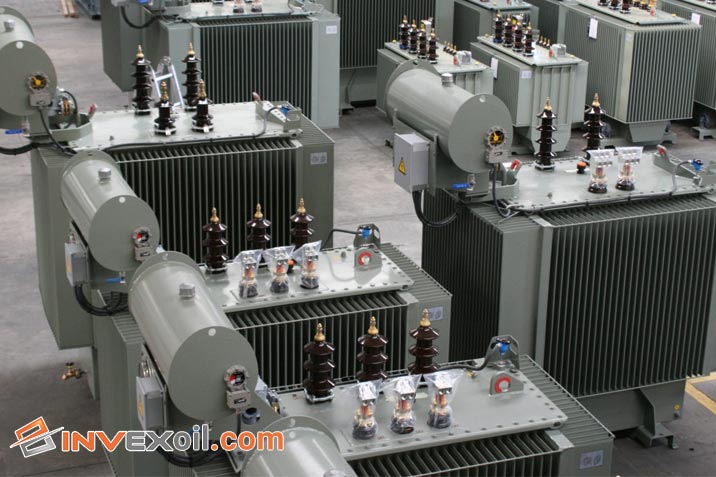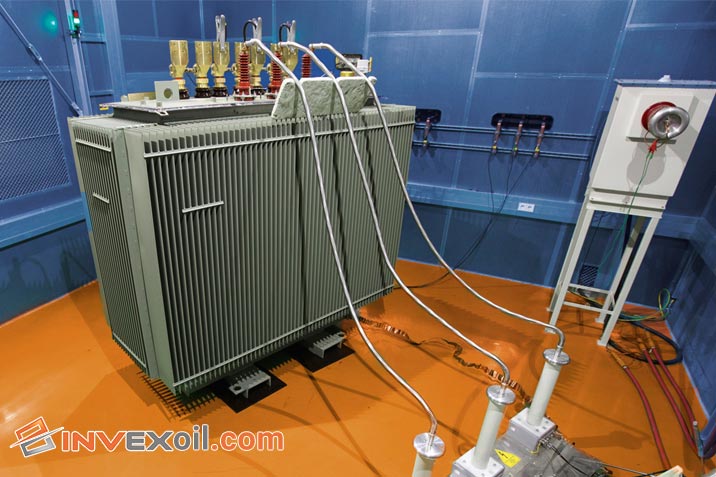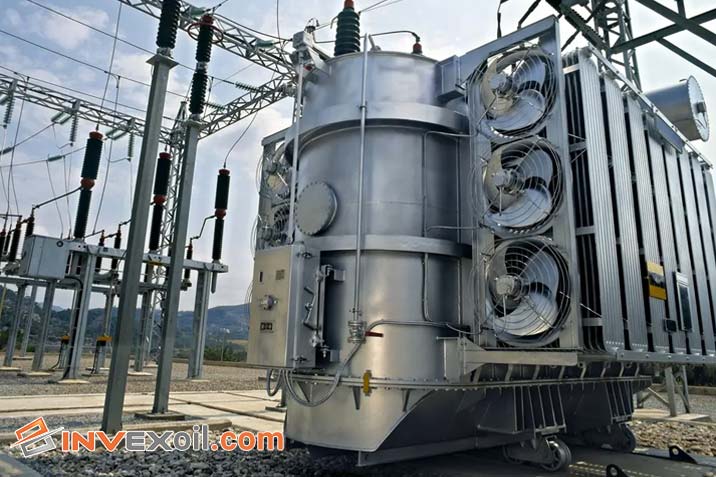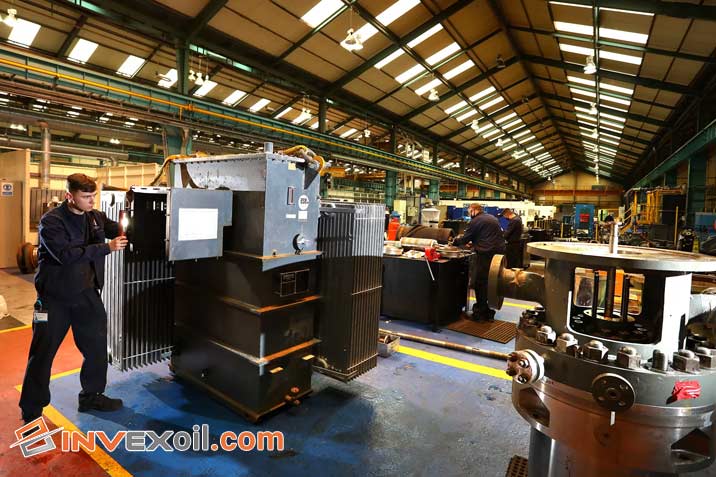When it comes to cooling transformers, the use of specialized oil, known as transformer oil used in transformer for cooling, is crucial for maintaining optimal performance and preventing overheating. Transformer oil treatment plays a vital role in ensuring the efficiency and longevity of transformers. The oil used in transformers for cooling purposes not only serves as a heat transfer medium but also provides insulation and protects against electrical breakdowns.
Over time, transformer oil can degrade due to contamination and aging. This necessitates the need for oil treatment processes, such as used oil refining, to restore its properties and remove impurities. By implementing effective transformer oil treatment methods, the performance and reliability of transformers can be significantly enhanced, ultimately contributing to the overall stability of power systems.
Table of Contents
The Importance of oil used in transformer for cooling
Oil is a critical component when it comes to cooling transformers. It serves as a vital cooling agent, dissipating the heat generated during transformer operation. By effectively transferring heat away from the transformer’s core and windings, the oil helps maintain optimal operating temperatures, preventing overheating and potential damage.
How Oil Functions Transformer for cooling function
Transformer oil functions as a cooling agent through its high thermal conductivity and heat dissipation properties. It absorbs heat generated during transformer operation and carries it away, effectively cooling the system. Additionally, the oil’s dielectric properties ensure electrical insulation, preventing short circuits and breakdowns.
3 Types of oil are used in transformers for cooling
Various types of oils are used in transformer cooling systems, with mineral oil being the most commonly used. Mineral oil offers good cooling performance and electrical insulation properties. Other options include synthetic oils, which provide enhanced thermal stability and fire resistance, and vegetable-based oils, known for their eco-friendly characteristics.
The following table provides a comparison of different types of transformer cooling oils, including mineral oil, synthetic oil, and vegetable-based oil. It highlights their properties, advantages, and limitations, aiding in the selection of the most suitable oil for transformer cooling.
| Oil Type | Properties | Advantages | Limitations |
| Mineral Oil | Good cooling performance | Widely available and cost-effective | Limited fire resistance |
| Synthetic Oil | Enhanced thermal stability | High fire resistance and self-extinguishing | Higher cost compared to mineral oil |
| Vegetable-based Oil | Eco-friendly and biodegradable | Lower environmental impact | Lower thermal conductivity and higher cost compared to mineral oil |
Factors to Consider When Choosing oil for transformer cooling
When selecting oil for transformer cooling, several factors come into play. Viscosity, flash point, oxidation stability, and dielectric strength are crucial considerations. The oil’s viscosity affects its flow characteristics and heat transfer efficiency. A high flash point ensures safety by reducing the risk of ignition. Oxidation stability is essential for maintaining the oil’s performance over time. Lastly, the dielectric strength ensures effective electrical insulation.
Properties of Transformer Cooling Oil
Transformer cooling oil possesses several important properties that contribute to its effectiveness in maintaining optimal transformer performance and preventing overheating.
Viscosity and Its Impact on Transformer Cooling
Viscosity refers to the oil’s resistance to flow. It plays a crucial role in determining the oil’s ability to transfer heat efficiently. Higher viscosity oils have reduced flow, leading to slower heat dissipation, while lower viscosity oils promote better heat transfer.
Flash Point and Fire Safety Measures in Transformer Cooling
The flash point indicates the temperature at which the oil can ignite when exposed to an open flame. Choosing oil for transformer cooling with a high flash point is crucial for fire safety in transformer systems. Fire safety measures such as proper insulation and fire-resistant construction materials should be in place to prevent accidents.
Oxidation Stability and Longevity of Transformer Oil
Oxidation stability refers to the oil’s ability to resist chemical reactions with oxygen over time. Oils with good oxidation stability maintain their performance and longevity, reducing the need for frequent oil replacements. Regular testing and maintenance can help monitor and manage the oil’s oxidation levels.
Dielectric Strength and Insulation Performance in Transformer Cooling
Dielectric strength is the oil’s ability to resist electrical breakdown and provide insulation between conductive components. To know better about the oil used in transformers for cooling and Transformer oil with high dielectric strength ensures effective insulation, preventing electrical faults and maintaining the integrity of the transformer system.
Best Practices for Maintaining Transformer Cooling Oil
Maintaining the quality and performance of transformer cooling oil is essential for ensuring the longevity and efficiency of transformers. By following best practices, operators can optimize the performance of their transformer cooling oil.
Regular Testing and Monitoring of Transformer Oil Condition
Regular testing and monitoring of transformer oil condition are crucial to detect any potential issues early on. Parameters such as acidity, moisture content, and dissolved gas levels should be regularly tested to assess the oil’s condition. This helps in identifying any contamination or degradation and allows for timely corrective actions.
The following table provides recommended testing parameters and their frequency for effective monitoring of transformer oil condition
| Testing Parameters | Frequency |
| Acidity | Annual |
| Moisture Content | Bi-annual |
| Dissolved Gas Analysis | Bi-annual |
| Particle Count | Quarterly |
Purification and Filtering Techniques for Optimizing Oil Performance
To optimize the performance of transformer cooling oil, purification, and filtering techniques can be employed. Methods such as vacuum dehydration, centrifuging, and adsorption filtration help remove moisture, solid particles, and impurities, enhancing the oil’s dielectric strength and heat transfer capabilities.
The table below compares different oil purification methods to optimize the performance of transformer cooling oil:
| Purification Method | Advantages | Limitations |
| Vacuum Dehydration | Removes moisture effectively | Requires specialized equipment and expertise |
| Centrifuging | Removes solid particles and impurities | Limited effectiveness for removing dissolved gases |
| Adsorption Filtration | Removes impurities and improves oil quality | Requires regular replacement of adsorbent material |
Handling and Storage Guidelines for Transformer Cooling Oil
Proper handling and storage of transformer cooling oil are vital to maintain its integrity. The oil used in transformer for cooling should be stored in clean and dry containers, protected from sunlight and extreme temperatures. Additionally, following safety guidelines and avoiding exposure to contaminants during handling can prevent oil degradation.
Proper storage conditions are essential to maintain the quality of transformer cooling oil. Consider the following recommendations:
| Storage Condition | Guidelines |
| Temperature | Store oil between 20°C – 25°C (68°F – 77°F) |
| Humidity | Maintain humidity levels below 50% |
| Container | Use clean, dry, and tightly sealed containers |
| Sunlight Exposure | Protect from direct sunlight |
Extending the Lifespan of Transformer Oil through Maintenance
Regular maintenance practices can significantly extend the lifespan of transformer cooling oil. This includes periodic oil sampling, analysis, and maintenance tasks such as oil top-up, leak detection, and equipment inspections. By adhering to maintenance schedules and addressing issues promptly, operators can prolong the lifespan of their transformer oil.
Common Issues and Troubleshooting of oil used in transformer for cooling
Transformer cooling systems can encounter various issues that affect their performance. Understanding these common problems and implementing effective troubleshooting measures is crucial for maintaining optimal cooling efficiency.
Contamination and Its Effects on Transformer Cooling
Contamination of transformer cooling oil can lead to reduced heat transfer efficiency and increased risk of equipment failure. Common contaminants include moisture, dirt, and dissolved gases. Regular oil analysis and filtration can help identify and mitigate contamination issues, ensuring efficient cooling performance.
Overheating and Thermal Stress in Transformer Oil
Overheating and thermal stress can cause degradation of oil used in transformer for cooling, leading to reduced performance and increased maintenance requirements. Factors such as high ambient temperatures, overload conditions, and inadequate cooling can contribute to these issues. Monitoring temperature levels and implementing proper cooling measures are essential for preventing overheating and maintaining oil integrity.
Identifying and Resolving Oil Leaks in Transformer Systems
Oil leaks in transformer systems can result in oil loss, reduced cooling efficiency, and potential environmental hazards. Timely detection and repair of leaks are crucial to prevent further damage. Regular visual inspections, oil level monitoring, and proactive maintenance can help identify and resolve oil leak issues promptly.
Resolving Foaming and Air Entrapment Issues in Transformer Cooling
Foaming and air entrapment in transformer cooling systems can impair heat transfer and disrupt oil flow. Factors such as improper oil level, high agitation, or air ingress can contribute to foaming issues. Addressing these issues through proper oil level maintenance, proper equipment design, and the installation of air release devices can resolve foaming and air entrapment problems.
Future Trends and Innovations in Transformer Cooling
The field of transformer cooling is constantly evolving with advancements and innovations that aim to improve efficiency and sustainability. These developments are shaping the future of transformer cooling technology .
Eco-Friendly and Biodegradable Options for Transformer Oil
As environmental concerns grow, there is a rising demand for eco-friendly alternatives to traditional transformer oils. Researchers are exploring biodegradable options that offer excellent cooling properties while minimizing the environmental impact. These oils are designed to meet stringent performance requirements while being more sustainable in their life cycle.
Advanced Monitoring Systems for Enhanced Transformer Cooling
To optimize transformer cooling performance, advanced monitoring systems are being developed. These systems utilize sensors and real-time data analysis to provide accurate insights into the cooling process. By monitoring factors such as temperature, oil condition, and cooling efficiency, operators can make informed decisions to improve the overall performance and reliability of transformer cooling systems.
Research and Development Efforts in Transformer Cooling Technologies
Ongoing research and development efforts are focused on exploring innovative transformer cooling technologies. This includes advancements in heat transfer mechanisms, cooling system designs, and novel cooling fluids. These endeavors aim to enhance the cooling efficiency, reliability, and lifespan of transformers, ensuring sustainable energy distribution systems.
oil used in transformer for cooling in a single Table
This table provides a concise overview of the important aspects discussed in the article. It highlights the significance of oil in transformer cooling, the different types of oils used, factors to consider when choosing the right oil, best practices for oil maintenance, troubleshooting common cooling issues, and future trends in transformer cooling technology.
Each topic is summarized with key points to provide readers with a quick and informative understanding of the article’s content. This table serves as a useful reference for anyone seeking essential information about transformer cooling and the role of oil in the process.
| Topics of oil used in transformer for cooling | Key Points of oil used in transformer for cooling |
| Importance of Oil in Transformer Cooling | – Oil is crucial for efficient cooling of transformers
– It helps dissipate heat and maintain optimal temperature – Proper oil selection is vital for effective cooling |
| Types of Oil Used in Transformer Cooling | – Mineral oil is commonly used for transformer cooling
– Synthetic and bio-based oils offer eco-friendly alternatives |
| Factors to Consider in Choosing Oil | – Viscosity, flash point, and oxidation stability
– Dielectric strength and compatibility with insulation materials |
| Best Practices for Maintaining Oil | – Regular testing and monitoring of oil condition
– Purification and filtering techniques for optimal performance – Proper handling and storage guidelines |
| Troubleshooting Common Cooling Issues | – Contamination, overheating, and oil leaks
– Resolving foaming and air entrapment problems |
| Future Trends and Innovations | – Eco-friendly and biodegradable oil options
– Advanced monitoring systems for enhanced cooling – Ongoing research in transformer cooling technologies |
Conclusion
this comprehensive article has delved into the crucial role of oil used in transformer for cooling purposes. We have explored the various types of oils utilized in transformer cooling systems, emphasizing the importance of factors such as viscosity, flash point, oxidation stability, and dielectric strength. Additionally, we have discussed best practices for maintaining transformer cooling oil, addressing regular testing, purification techniques, proper handling, and storage guidelines.
FAQ
What is the purpose of using oil in transformers for cooling?
The oil used in transformer for cooling, dissipating heat generated during operation and maintaining optimal temperature levels.
What are the different types of oil used for transformer cooling?
Various types of oils are used for transformer cooling, including mineral oils, synthetic oils, and vegetable-based oils, each offering different properties and benefits. They are also kinds of oil used in transformer for cooling.
How can I ensure the proper maintenance of transformer cooling oil?
Regular testing and monitoring of oil condition, purification and filtration techniques, and adhering to proper handling and storage guidelines are crucial for maintaining the performance and longevity of oil used in transformer for cooling.

Hello, This is Matteo Hudson Copywriter from InvexOil. We are here to provide super-important content to help you learn more easily and be involved in the world of Petroleum and Chemistry. We are here to answer your questions, help you to have better services, and also find the best solution for your problems. Don’t be shy and ask your questions in the comment box or call our number. If you want to connect with me directly, you can search for my name on Linkedin.

